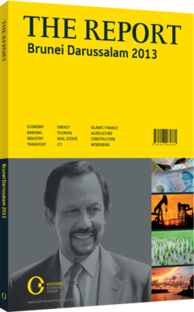Quality of life: Expanding the field in a limited market
Life insurance has struggled to take root in Brunei Darussalam. However, with only three life insurers, American International Assurance (AIA), Great Eastern Life Insurance and Tokio Marine Life Singapore, as well as sharia-compliant coverage by Takaful Brunei Keluarga covering less than 20% of the population, there should be significant room for growth. But such expansion could be an uphill battle. In 2011 net written premiums in the life sector increased by 5.8% to $52.8m.
LOCAL CARE: A comprehensive national welfare system reduces incentives for private life insurance. Indeed, the benefits available to public sector workers are extensive. Bruneians and permanent residents that work in the private sector also receive comprehensive benefits. In addition to full health care coverage, the state offers a generous pension scheme from the age of 60. The 2012-13 budget emphasises public welfare, and Minister of Finance II, Pehin Dato Abdul Rahman Ibrahim, called for an additional BN$40.9m ($31.85m) to boost health care provision.
These provisions have not hurt the local life insurance market. “Customers like to have choices, make their own decisions and enjoy timely services,” Peter Lim, general manager of AIA, told OBG. However, as the welfare system grows, costs are likely to rise, and the government may look to the private sector to increase its input. With life expectancy at 77.7 years and more of the labour force retiring, the dependency ratio and percentage of retired citizens will rise, increasing pressure on the welfare system.
NEW SCOPE: One bright prospect for local life insurers is the government’s drive to encourage personal savings and lower personal debt. In 2005 the Ministry of Finance issued a directive that by 2010 personal loans should not exceed 30% of a bank’s total loan portfolio. Another regulation set credit limits for individual borrowers at 12 times their gross monthly salary, with the repayment period capped at six years. The ministry also set limits on credit card use, including a minimum age of 21 and a monthly salary of at least BN$500 ($390).
The industry sees these measures as a cue to increase its operations. Despite comprehensive national health care, AIA, which saw healthy growth in premiums across its portfolio in the last two years, sees opportunities to widen its role in the health insurance segment via new innovative and affordable products. The firm offers competitive premiums priced from BN$150-260 ($ 117-203) per month. It is able to keep premiums competitive and its health line profitable with a low claims rate and few payouts for permanent disability or mortality.
MORE MARKET GROWTH: Retirement planning may also be a major growth area in the coming years. In 2010 the Ministry of Finance introduced the supplemental contributory pension (SCP) to boost the existing old age pension, under which nationals and permanent residents receive BN$250 ($195) per month from the age of 55. The new SCP, compulsory for all employees in the public and private sectors, provides an additional BN$150 ($117) per month upon retirement at the age of 60. The minimum contribution for SCP is BN$17.50 ($13.60) or 3.5% of the monthly salary starting at a minimum wage of BN$500 ($390) per month. For salaries below this threshold, the government will make up the shortfall. The maximum contribution is BN$98 ($76) per month based on a salary of BN$2800 ($2180).
While the SCP will boost personal savings, it is mainly aimed as a safety net for poorer citizens and as a means for encouraging responsible saving. As such, private life insurers may have opportunities to market pension products to citizens in middle and higher income ranges. Life insurers have been pushing their products strongly over the last three years, and bancassurance has become an increasingly prominent vehicle for marketing products. Life insurers have been marketing their products strongly over the last three years, and bancassurance is an increasingly prominent vehicle for marketing products to meet customers saving and production needs. Lim expects that bancassurance will account for about 20% over the long term, with the rest distributed via agency channels.
You have reached the limit of premium articles you can view for free.
Choose from the options below to purchase print or digital editions of our Reports. You can also purchase a website subscription giving you unlimited access to all of our Reports online for 12 months.
If you have already purchased this Report or have a website subscription, please login to continue.

